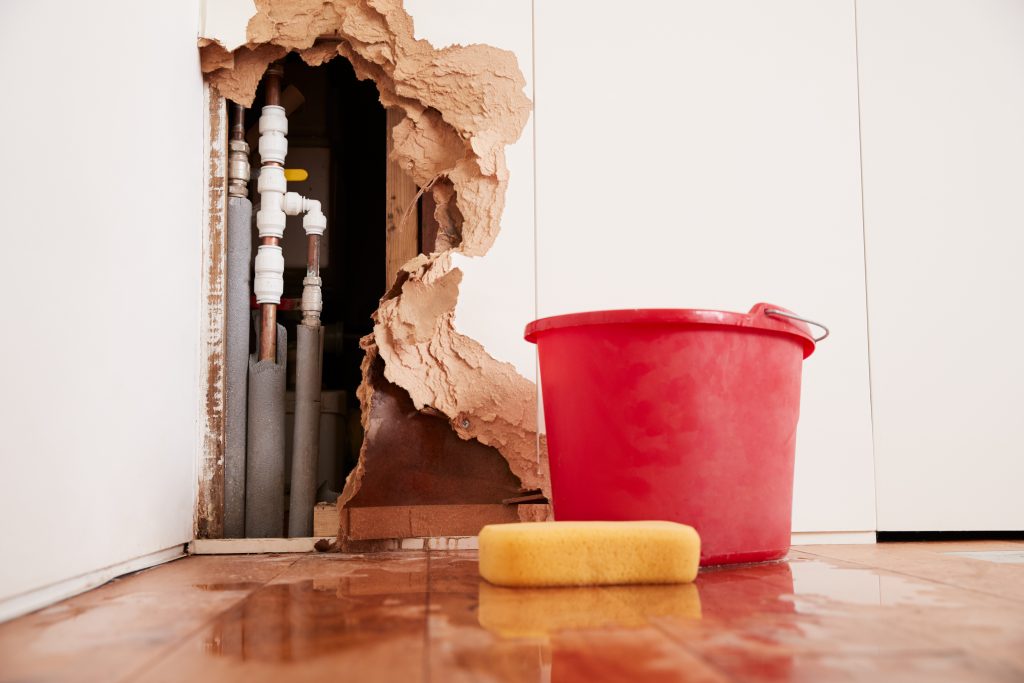6 Ways to Locate Concealed Water Leakages in Your Home
6 Ways to Locate Concealed Water Leakages in Your Home
Blog Article
Each person is bound to have his or her own piece of advice on the subject of Detecting hidden plumbing leaks.

The moment you discover a leakage, calling your plumber for repair work is the very best option. Nonetheless, some small water leakages might not be visible. Here are some hacks that help if you can not discover it with your nude eyes.
Early detection of dripping water lines can minimize a potential disaster. Aside from saving you money, it will lessen the aggravation and frustration.
Examine Water Usage
If you spot abrupt modifications, regardless of your intake being the exact same, it implies that you have leakages in your plumbing system. An abrupt spike in your costs suggests a fast-moving leakage.
Meanwhile, a stable rise on a monthly basis, despite the very same routines, shows you have a slow leakage that's also slowly escalating. Call a plumber to thoroughly inspect your property, specifically if you really feel a warm area on your floor with piping below.
Evaluate the situation and also examine
Homeowners need to make it a practice to examine under the sink counters as well as also inside cabinets for any bad odor or mold growth. These two warnings show a leakage so prompt attention is needed. Doing regular inspections, also bi-annually, can save you from a significant problem.
Take A Look At the Water Meter
Every residence has a water meter. Inspecting it is a surefire way that assists you find leakages. For beginners, switch off all the water sources. Ensure nobody will certainly flush, use the tap, shower, run the cleaning device or dishwashing machine. From there, go to the meter and also watch if it will change. Given that nobody is utilizing it, there ought to be no motions. That indicates a fast-moving leak if it moves. Similarly, if you discover no changes, wait an hour or two and also inspect back once again. This implies you may have a slow-moving leakage that might even be underground.
Asses Exterior Lines
Do not forget to inspect your exterior water lines as well. Needs to water seep out of the link, you have a loose rubber gasket. One small leakage can squander bunches of water as well as increase your water bill.
Do a Food Coloring Test
30% comes from bathrooms when it comes to water intake. Test to see if they are running appropriately. Decline specks of food shade in the container as well as wait 10 mins. If the color somehow infiltrates your dish throughout that time without flushing, there's a leak between the storage tank and also bowl.
Inspect for discolorations and weakening as most appliances and also pipelines have a life span. If you think leaking water lines in your plumbing system, do not wait for it to intensify.
The moment you locate a leakage, calling your plumber for repairs is the ideal option. Some small water leaks might not be visible. Checking it is a proven method that helps you discover leakages. One tiny leakage can lose lots of water and increase your water bill.
If you believe dripping water lines in your plumbing system, don't wait for it to intensify.
How to Know If Your Home Has a Hidden Leak
Water Meter Reveals Inexplicable Water Usage
If you’d like to test whether or not there’s a leak somewhere in your home, you can do this using your water meter. Here is how to conduct the test:
Don’t use any water in your home for at least 30 minutes; this also means not turning on faucets or water-using appliances.
Go outside, and check your water meter for activity.
If your water meter shows that there was activity, even though no one was using any water, this proves that there is a leak in your home.Visible Mold or Mildew Growth
Leaks behind walls create moist, dark environments that allow mold and mildew to grow and thrive. Eventually, you might see mold growth forming on the wall closest to a hidden leak.
If mold is growing in an area that receives a high amount of moisture, such as a bathroom, it may simply be an indication that better ventilation is needed. However, if you see mold growth on a wall or the ceiling in an area where you would not expect, you probably have a hidden leak.
Musty, Mildew Odor
Sometimes you might not be able to see the mold or mildew that is growing as a result of a leak. However, the smell can give the problem away just as easily. If you catch a whiff of something musty, there’s a good chance that old water is collecting somewhere in your home that you can’t see.
Stained/Warped Walls, Ceilings, or Floors
When your home soaks up water, a variety of red flags can become visible, including ceiling stains, bubbling drywall, warped walls, and sagging floors. While these issues can be caused by excess humidity, they can also be signs that a pipe or plumbing connection has started leaking behind your walls.
Inexplicably High Water Bill
After a while, you get a general sense for what your water bill should be. If you own a pool or sprinkler system, your bill will tend to be higher during summer. However, if you receive a water bill that seems especially high, and you can’t figure out what caused it, then you may have a hidden leak somewhere that’s increasing your bill.
https://www.plumbingjoint.com/blog/2019/july/how-to-know-if-your-home-has-a-hidden-leak/

I stumbled upon that post on Detecting hidden plumbing leaks when surfing around the internet. Kindly take the opportunity to share this post if you appreciated it. We enjoy reading our article about Detecting hidden plumbing leaks.
Report this page